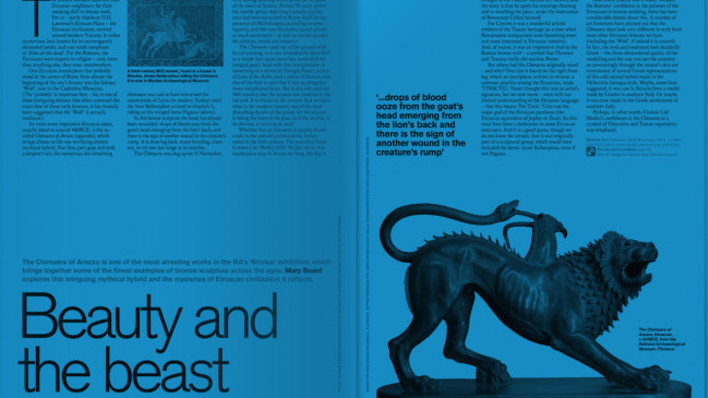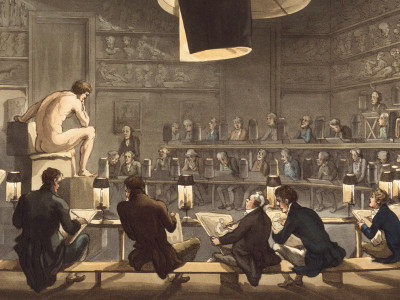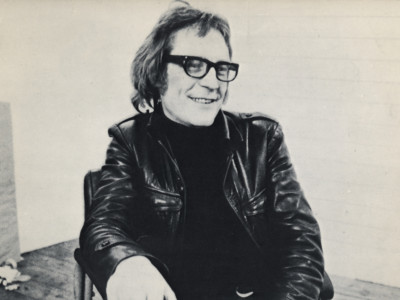
In the studio with David Adjaye RA
By Fiona Maddocks
Published on 1 October 2017
The international architect talks art collections, local communities and working for the disempowered at his London studio.
From the Autumn 2017 issue of RA Magazine, issued quarterly to Friends of the RA.
I am waiting in the studio of David Adjaye RA, with his assistant, in the open-plan, ground-floor meeting area of his Marylebone practice. All around shelves are filled with blocks and tiles, meshes and architectural models, a toyshop of texture, shape and colour. Will he enter from the front or emerge from the studio far away at the rear? The voluminous space is separated by heavy, pea-green felt curtains, which give a certain fluidity and mystery. Suddenly Adjaye slips unseen into one of the office’s classic Eames Aluminium chairs, ready for action. There is not a moment to waste.
With multiple projects across the globe, from Manhattan to Johannesburg, San Francisco to Accra, Latvia to Texas, this international architect is a virtuoso juggler. His recent triumphs include his Smithsonian National Museum of African American History and Culture in Washington, a knighthood in the 2017 New Year’s Honours list and, in March, election to the Royal Academy.
He has commissions at two prominent London landmarks: 5 Strand, next door to Charing Cross station, and One Berkeley, opposite the Ritz. His work covers all points of the capital, from the Stephen Lawrence Centre in Deptford to the Bernie Grant Arts Centre in Tottenham to the Idea Store in Whitechapel. He also draws, designs furniture and oversees offices in New York and London.

Born in Tanzania in 1966 to Ghanaian parents, Adjaye moved around early on – his father was a diplomat – but grew up in London from the age of 13. He planned to become a scientist or perhaps join the air force until, as he puts it, "a wonderful art teacher at school thought maybe I should try a foundation art course. That was the start."
From Middlesex Polytechnic he went to the Royal College of Art. As a young architect he worked with David Chipperfield RA. "I wasn’t part of his practice but I helped out on competitions and always want to acknowledge his guidance." Adjaye gained further experience with the Portuguese architect Eduardo Souto de Mouro and the design agency Pentagram, then set up his own practice. He now has a total staff of around 100 (60 in London, 40 in New York, plus an office in Accra).
Gentle and calm-mannered but intense, Adjaye took over the building which is now his London base six years ago. It was, he laughs, "a neo Art Deco American-state-department-style building, or essentially a warehouse. Anyway, just the kind of large, expansive muscular structure I wanted! It turned out to be perfect." He remodelled it, extending it, adding a floor and painting the outside with distinctive grey stucco. An open-air water feature – a long pool with a fountain – is set in the narrow space between old building and new extension. You can see staff working at their screens, a pattern of red chairs and black desks distorted through the refraction of water and glass.
I’m obsessed with change and mutation. Maybe it’s the underlying drive: how things turn into other things. For me, it’s alchemy.
David Adjaye RA
A distinctive feature of Adjaye’s work is his ongoing collaboration with artists. He has built studio-homes for Jake Chapman and Chris Ofili, as well as Tim Noble & Sue Webster, whose light sculpture, Forever, splashes across Adjaye’s studio wall. Making an equal impact – and matching the curtains – is a huge pair of prints by Isaac Julien. In each, a woman swathed in white is seemingly flying through a rich, green space. "My favourite colour", Adjaye comments, needlessly you might say when you look around.
All Adjaye’s projects, whether his contemporary art building in Harlem or one of his grand, London commercial projects, are about community. "I’m interested in where buildings are in the landscape, how a new example of architecture will fit in and relate to those who live or work around."
His hive-like Johannesburg building, Hallmark House, has brought a mothballed 1970s industrial building back to life. A new, mixed community now lives in this area of regeneration. "I want to work for the disempowered. In Jo’burg during apartheid people left the centre of the city and moved to the edge. Now they’re coming back to the middle… and to this building."
Adjaye’s assistant is back. This madly busy, quietly spoken man, whose eyes fire up as he speaks or smiles, sums up: "It all comes back to my love of physics and chemistry, as essential to architecture as all the more obvious artists’ elements. I’m obsessed with change and mutation. Maybe it’s the underlying drive: how things turn into other things. For me, it’s alchemy."
Then he is gone.
More from Adjaye's studio

"This is part of our metal section. We’re looking at a section of aluminium substrates and mesh products. We like to explore how the material behaves, what form it takes under different conditions, how the colours change when it oxidises."

"At the heart of the studio is a water feature. I wanted to create a sense of calm in a dense urban landscape, an area to meditate on light and the movement of water. It’s between two rooms. One is part of the old buildling, one is a new extension.”

"These are shelves in our model room. These are models of projects past and present, used or discarded. None of them is recognisable as a particular building. It’s all part of the long process of reaching a definitive design."
Fiona Maddocks is a journalist, broadcaster and Classical Music Critic for the Observer.

Enjoyed this article?
As well as free entry to all of our exhibitions, Friends of the RA enjoy one of Britain’s most respected art magazines, delivered directly to your door. Why not join the club?
Related articles

Visions from Ukraine
19 June 2024

10 RA Schools stories through the centuries
16 May 2024

In memoriam: Mick Moon RA
1 May 2024